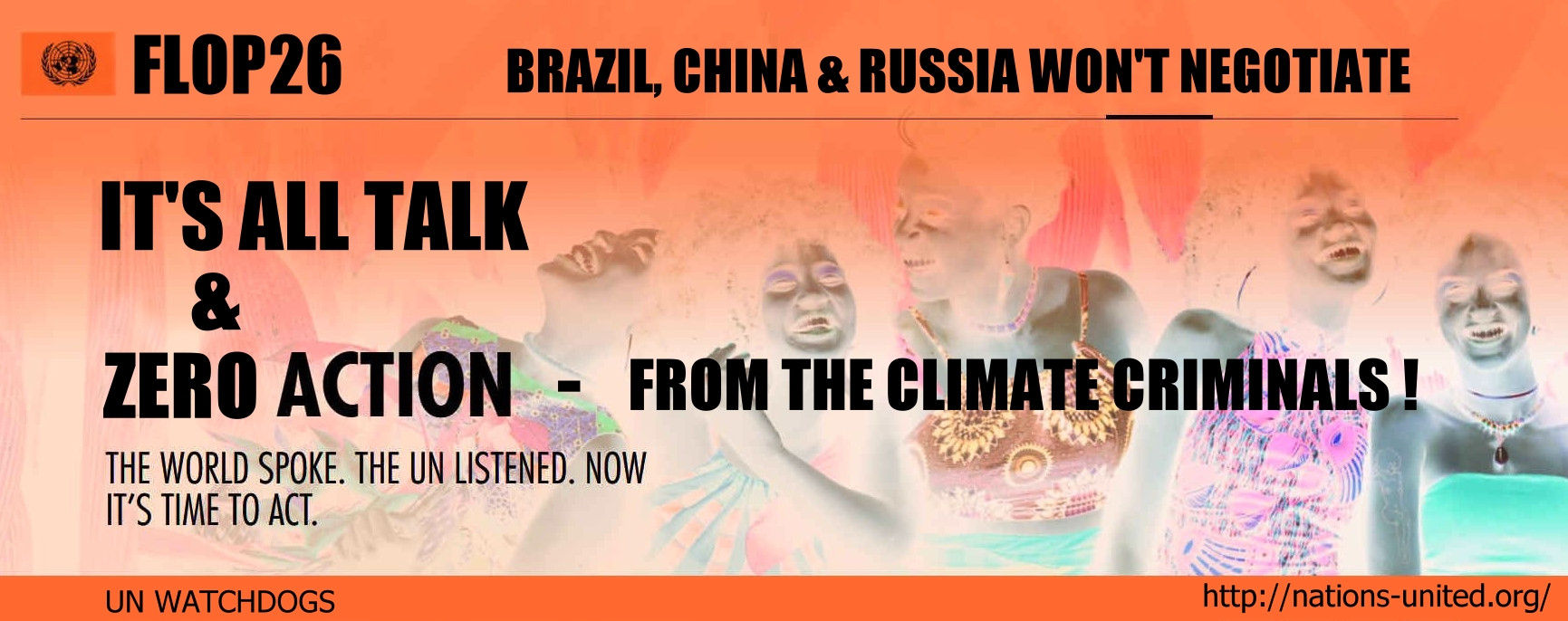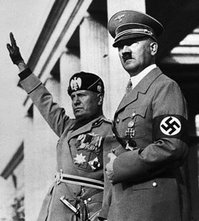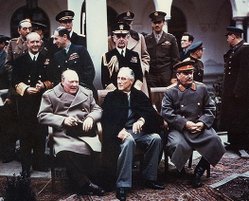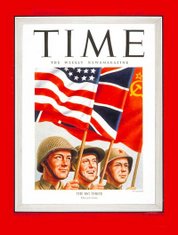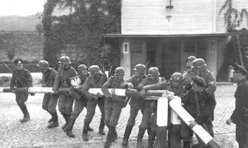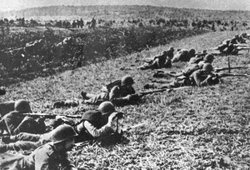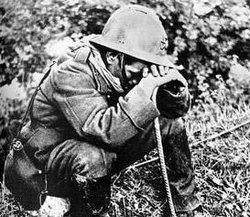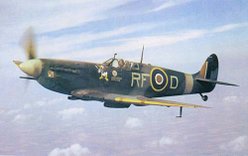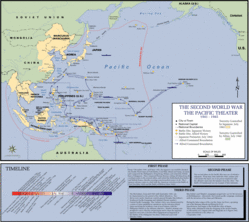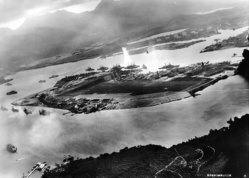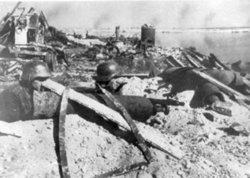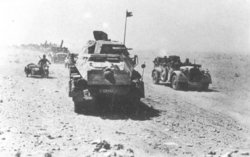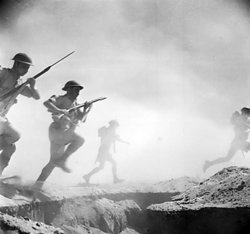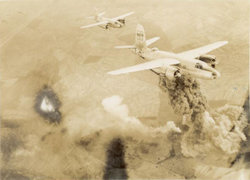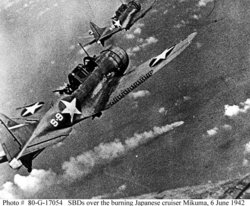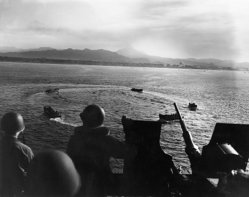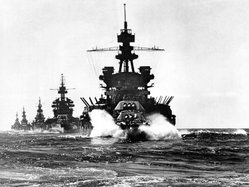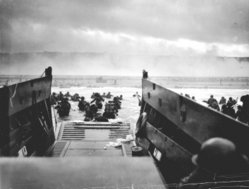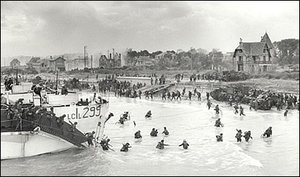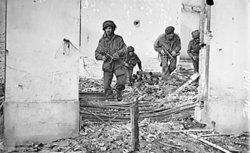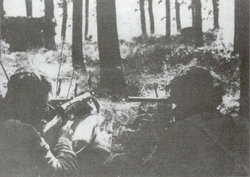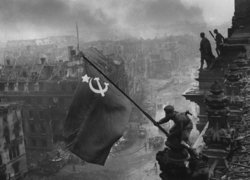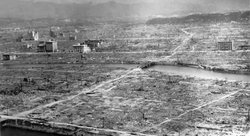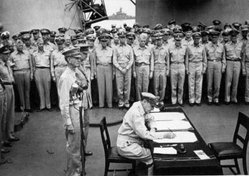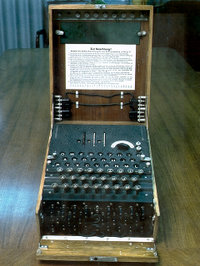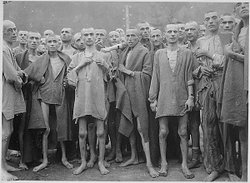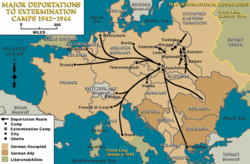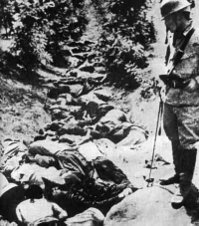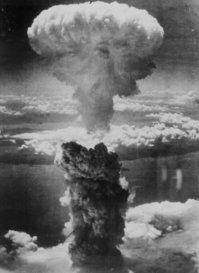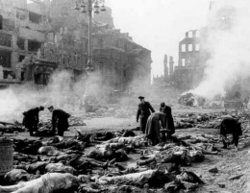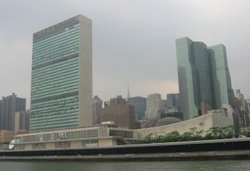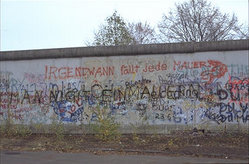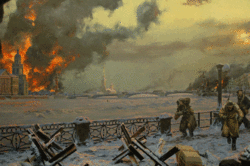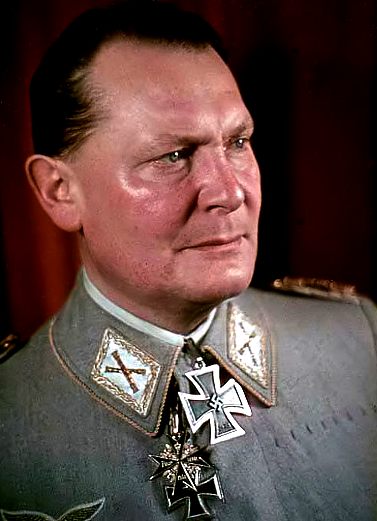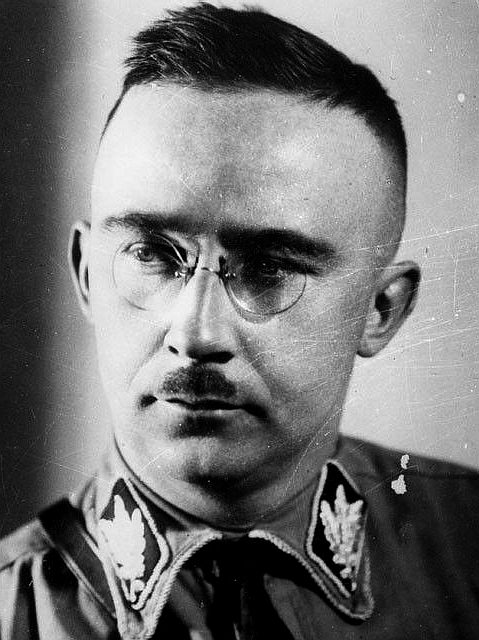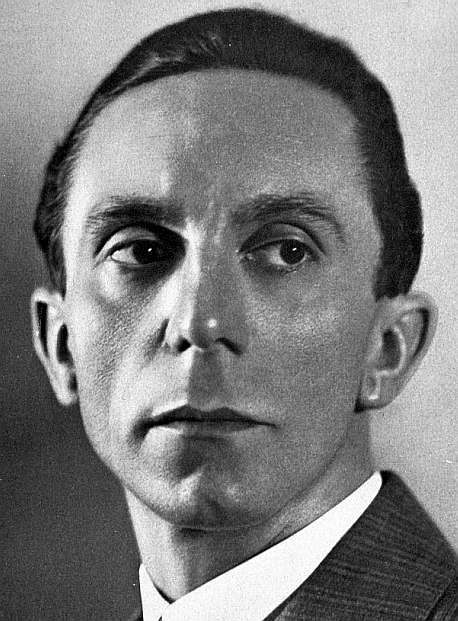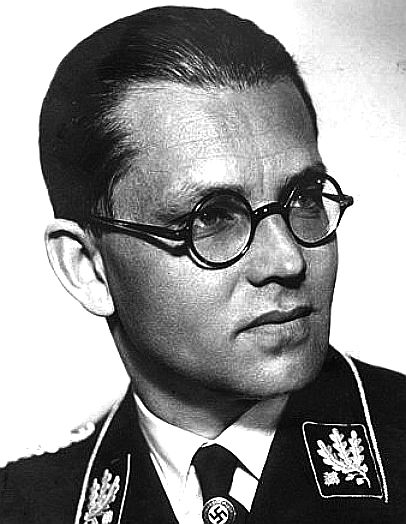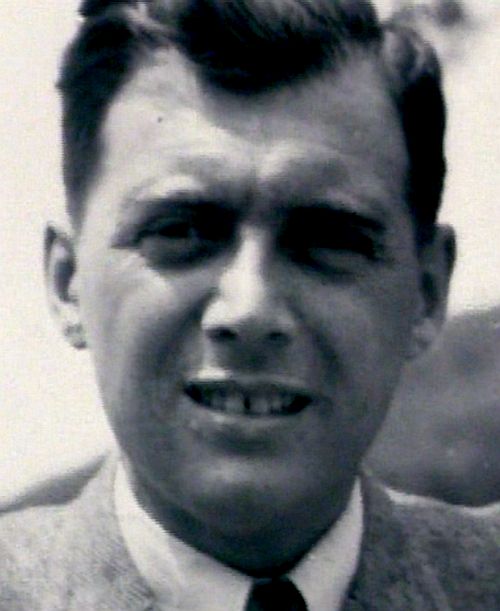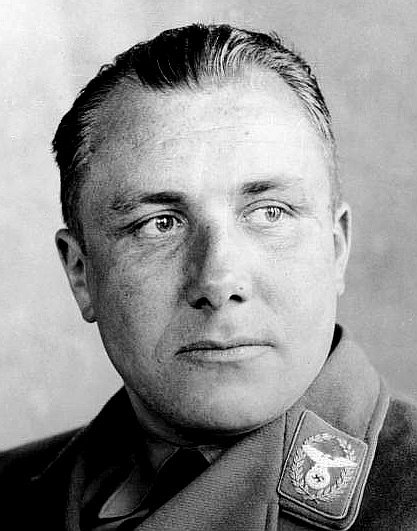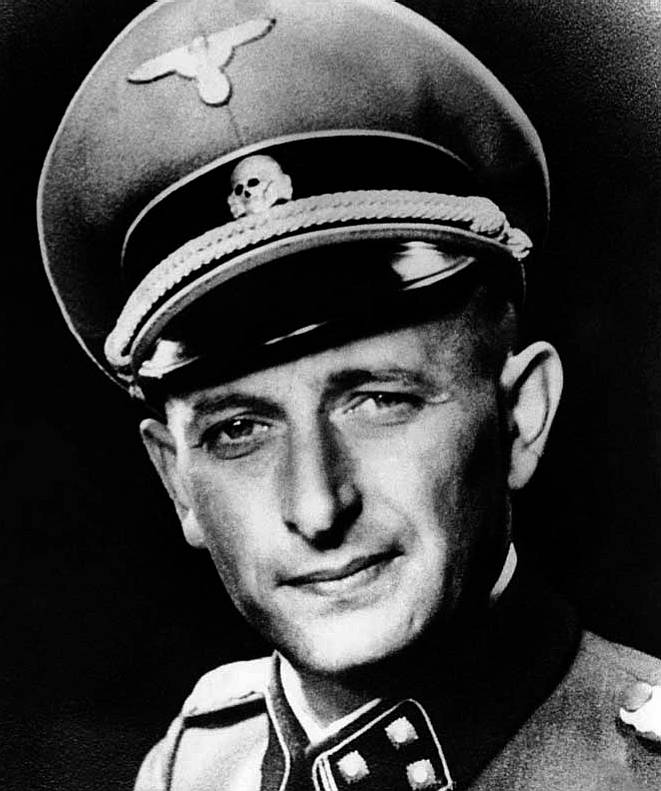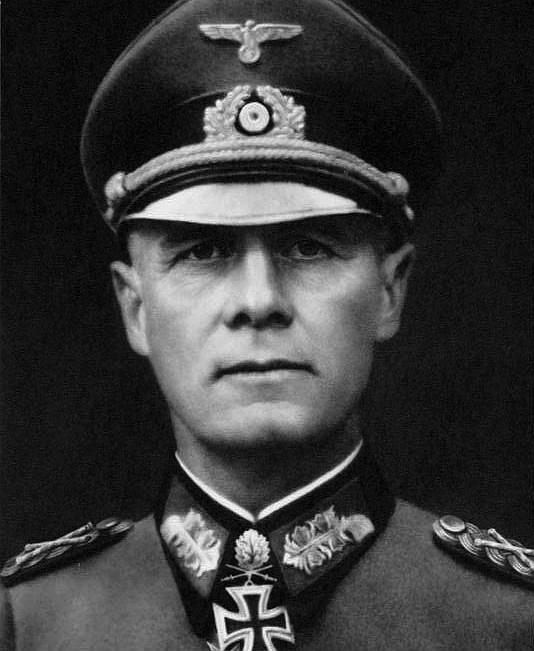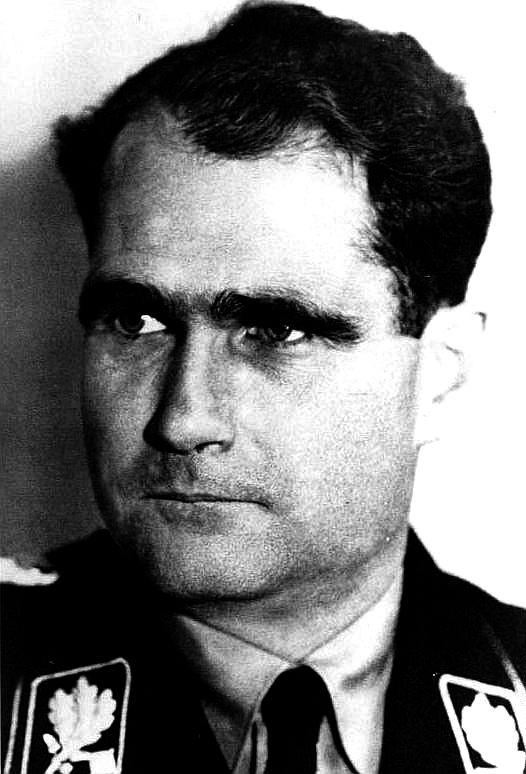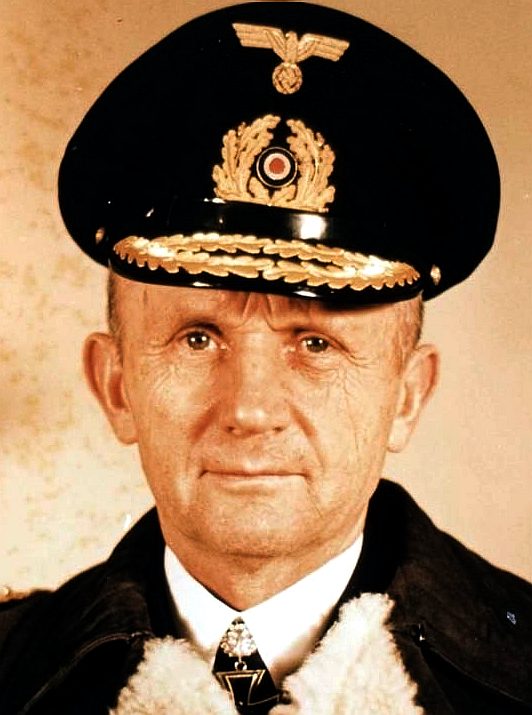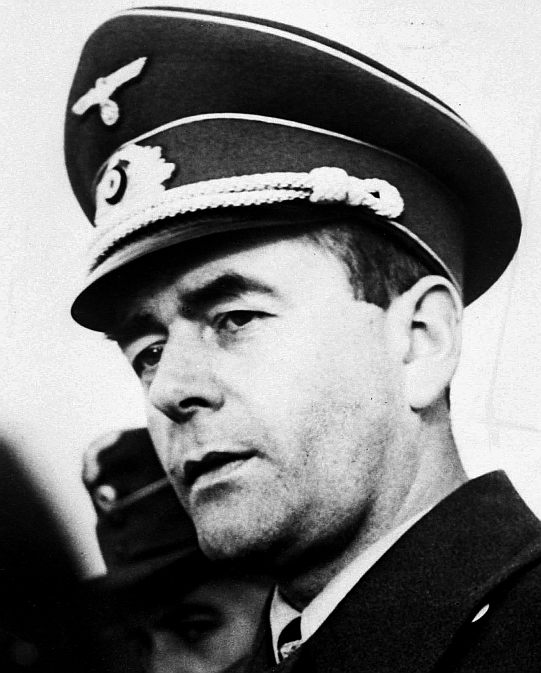|
WORLD WAR TWO
|
|||||||||||||
|
CLIMATE & FOOD INSECURITY COULD TRIGGER WWIII - As desertification, erodes the area for the growing of crops, food insecurity will begin to raise tensions, as will the energy crisis - as the population continues to grow, demanding more of the planet - that it simply cannot provide. The oceans are now loaded with plastic toxins, making fish potentially carcinogenic and a dangerous source of protein. Whereas, humans represent a last resort, and a huge source of protein, that Sweeney Todd and Margery Lovett found sold well in Fleet Street, London, as pork and veal pies. As in tradition, those failing to address political issues, should go into the pot first.
COP 26 is rapidly turning into FLOP27. The disclosure of documents from many countries churning out beef, cutting down rain forests, scamming with cryptocurrencies and either burning or exporting, coal, oil or gas, tells it like it is. The big players are fighting shy of committing to binding targets aimed at reducing greenhouse gases. China is exporting cheap goods made from burning coal, while enjoying a building boom and vast computer networks chewing through coal-generated electricity for bitcoin mining. Alok Sharma and any remaining responsible counties don't have a prayer in the face of such refusal to change over to zero carbon tech.
One way of dealing with the Climate Nazis is not to import of export any goods to or from them. This would entail the good-guys improving home grown agriculture and ties only with countries with zero emission pledges. The same applies to goods such as computers and electric cars, where almost all lithium batteries are Made in China. You may agree that drastic action is necessary. In which case it's simple. Don't buy anything that comes from Argentina, Australia, Brazil, China or Russia. Insist on domestically produced goods. Insist that your country has such policies. We are on a war footing at Defcon 1.
World War II, also known as the Second World War, was a mid-20th century conflict that engulfed much of the globe and is accepted as the largest and deadliest war in human history. The war was fought between the Axis Powers and the Allies. The Axis initially consisted of an alliance between Germany and Italy, which later expanded to include Japan and Eastern European countries such as Romania and Bulgaria. For almost two years, from August 1939 to June 1941, the Soviet Union (USSR) was an active partner with Germany in dividing up Eastern Europe before a confrontation between the two nations saw them become enemies and the USSR was itself attacked by Germany.
Benito Mussolini and Adolf Hitler
Some of the nations that Germany conquered sent military forces, particularly to the Eastern front. Among the expeditionary forces that joined Germany were forces from Vichy France, Spain (though Spain was itself a neutral country), and armies of Russians and Ukrainians under the command of the general Andrey Vlasov. The Allies initially consisted of the United Kingdom, along with the British Empire and most of the Commonwealth, France and Poland, later joined (in 1940) by Norway, Belgium and the Netherlands and in 1941 by the USSR (after Germany broke its pact with the Soviet Union) and the United States of America. Other notable allies included China, which had been engaged in war with Japan since the mid-1930s, and Brazil.
Approximately 62 million people died as a result of the war. This figure includes acts of genocide such as the Holocaust and General Ishii Shiro's Unit 731 experiments in Pingfan, incredibly bloody battles in Europe, North Africa and the Pacific Ocean, and massive bombings of cities, including the atomic bombings of Hiroshima and Nagasaki in Japan, the firebombing of Dresden and Pforzheim in Germany and the blitz on British cities such as Coventry and London. Few areas of the world were unaffected; the war involved the "home front" and bombing of civilians to a greater degree than any previous conflict. Atomic weapons, jet aircraft, rockets and radar, the blitzkrieg (or "lightning war"), the massive use of tanks, submarines, torpedo bombers and destroyer/tanker formations, are only a few of many wartime inventions and new tactics that changed the face of conflict. It was the first time that a number of newly developed technologies, including nuclear weapons, were used against either military or civilian targets. It is estimated to have cost about 1 trillion US dollars in 1945 (adjusted for inflation; roughly 10.5 trillion in 2005), not including subsequent reconstruction. The vast outcomes of the war, including new technology and changes to the world's geopolitical, cultural and economic arrangement, were unprecedented in human history.
After World War II, Europe was partitioned into Western and Soviet spheres of influence, the former undergoing economic reconstruction under the Marshall Plan and the latter becoming satellite states of the Soviet Union. This partition was, however, informal; rather than coming to terms about the spheres of influence, the relationship between the victors steadily deteriorated, and the military lines of demarcation finally became the de facto country boundaries. Western Europe largely aligned as NATO, and Eastern Europe largely as the Warsaw pact countries, alliances which were fundamental to the ensuing Cold War. In Asia, the United States' military occupation of Japan led to Japan's democratization. China's civil war continued through and after the war, resulting eventually in the establishment of the People's Republic of China. There was a fundamental shift in power from Western Europe to the new superpowers, the United States and the Soviet Union, with significant boundary changes and displacement of people as the Soviet Union's borders shifted westwards.
The "Big Three": Winston Churchill Franklin D. Roosevelt Joseph Stalin Yalta Conference in 1945
Causes
The causes of World War II are naturally a debated subject, but a common view, particularly among the allies in the early post-war years, ties them to the policy of appeasement, which was directed by Britain and France after the First World War and expansionism of Germany and Japan: Germany had lost wealth, power and status following the First World War and the main purpose of the economic, military, and (eventually) territorial expansion was to give Germany a place as a world power again and, in addition, to obtain resource rich land at the expense of Poles and Ukranians.
In Germany, there was a strong national desire to escape the bonds of the World War I Treaty of Versailles, and eventually, Hitler and the Nazis assumed control of the country by calling for a heroic mass effort to restore past glory. They led Germany through a chain of events: rearmament, reoccupation of the Rhineland, incorporation of Austria Anschluss, dismemberment and occupation of Czechoslovakia and finally the invasion of Poland. Some academics have gone so far in linking the Treaty of Versailles directly to the conflict as to claim that the European theatres of World War I and II actually constitute a single conflict with a 22-year ceasefire (much as the 1337-1453 Hundred Years War is treated as a single conflict). The London School of Economics has gone so far along its route that its history department now teaches a course entitled "European Civil War 1890 to 1945"[3]. The two conflicts are also described in this way by Duke University's J.M. Roberts[4].
In Asia, Japan's efforts to become a world power and the rise of militarist leadership (in the 1930s, the government in Japan was undermined as militarists rose to power and gained de facto totalitarian control) led to conflicts first with China and later the United States. Japan also sought to secure additional natural resources, such as oil and iron ore, due in part to the lack of natural resources on Japan's own home islands.
The League of Nations was powerless and mostly silent in the face of many major events leading to World War II such as Hitler's re-militarisation of the Rhineland, annexation of Austria, and occupation of Czechoslovakia. The League commissioner in Danzig was unable to deal with German claims on the city. This was a significant contributing factor in the outbreak of World War II in 1939.
Participants
The belligerents of the Second World War are usually considered to belong to either of the two blocs: the Axis and the Allies. A number of smaller countries participated in the war, some of them under occupation or as proxies of one of the large powers. Some nations participated on different sides at different times.
The "Big Three" on the cover of TIME (May 14, 1945)
The Axis Powers consisted primarily of Germany, Italy, and Japan, which split the earth into three spheres of influence under the Tripartite Pact of 1940, and vowed to defend one another against aggression. Smaller countries participating on the Axis side were Bulgaria, Romania, Hungary, Slovakia, Croatia, Carpathia, and Finland. Spain's fascist government never joined the Axis but signed the Anti Comintern Pact of 1941 with Germany and sent volunteers to fight on Germany's Eastern Front. The Soviet Union was actually an ally of Germany at the beginning of the war, sharing with Germany the division of Poland and Baltic states. The Soviet Union provided supplies to Germany, while the United Kingdom and France were attempting to fend off Germany's successful 1940 advance into Western Europe. As discussed below, the Soviet Union remained an ally of Germany, as a supplier, until Germany ended that relationship on June 22, 1941 by invading that country.
Among the Allied powers, what emerged to be the Big Three were the United Kingdom (from September 3, 1939), the Soviet Union (from June 1941) and the United States (from December 1941), though some consider smaller countries like Australia and Canada to be part of the Big Five as it is called. The nations, which declared war on Germany in September 1939, included Britain and the Commonwealth, France, and Poland. China had been at war with Japan since 1937.
On August 23, 1939, just before the war broke out, the USSR and Germany signed the non-aggression Molotov-Ribbentrop Pact, which, among other things, divided Eastern Europe into regions of influence. But Germany violated the pact when it invaded the USSR in 1941. Similarly, the US had the (much older) unilateral Monroe Doctrine, which stated that Europe should not interfere in the Americas and, in turn, the U.S. would not interfere in European affairs. But the U.S. entered the war after, first, Japan and, then, Germany declared war on it and launched direct attacks on its navy, shipping and other interests.
Many other countries, including Australia, Belgium, Brazil, Canada, Czechoslovakia, Denmark, France, Greece, the Netherlands, New Zealand, Norway, the Philippines, Poland, Thailand and Yugoslavia are also considered important Allies, although some of these were conquered and occupied by Axis forces or even officially joined the Axis as a result of coercion.
Countries that attempted to remain neutral in the conflict were often viewed with suspicion by the participants, and pressured to make contributions to the most influential power in their neighbourhood. Sovereignty was difficult to maintain, as many countries that did not directly participate in the conflict nevertheless held vested interests in seeing a particular side prevail. For example, neutral Switzerland was generally considered to be "Allied-friendly", while neutral Spain was considered "Axis-friendly", despite the fact that neither country openly proclaimed any alliances. Such situations allowed neutral countries to become hotbeds of espionage.
German soldiers destroy Polish border checkpoint Staged event days after war declared for propaganda
ChronologyA debated starting date
The date on which World War II started is a debated subject; historians do not all agree on which event signified the start of the war. The most common date used is 1 September 1939, marking the German invasion of Poland, which resulted in the British and French declarations of war two days later. Other candidates include the Japanese invasion of China on 7 July 1937, (the start of the Second Sino-Japanese War), or the entry of Hitler's armies to Prague in March 1939. Some historians argue that the Italian attack on Ethiopia (The Second Italo-Abyssinian War), which lasted seven months in 1935-1936, was the actual start of World War II. There are some other historians that argue the war started on the Manchurian Incident on 18 September 1931.
1937: Second Sino-Japanese War
On 7 July 1937, Japan, after occupying northeastern China as Manchuria in 1931, launched another attack against China near Beijing (see Marco Polo Bridge Incident). Rather than retreating swiftly, as in previous engagements with the Japanese, the Chinese government began a war of resistance, marking the official start of the Second Sino-Japanese War, which would soon become part of the World War. The Japanese made vast initial advances, but were stalled in Shanghai for months in the Battle of Shanghai. The city eventually fell to the Japanese and in December 1937, the capital city, Nanking (now Nanjing), fell and the Chinese government moved its seat to Chongqing for the rest of the war. Surprised by the unanticipated level of resistance from China, the Japanese forces committed brutal atrocities against civilians and POWs when Nanking was occupied (see Nanjing Massacre), killing as many as 300,000 civilians within a month.
1939: War breaks out in Europe
War broke out in Europe on 1 September 1939, with the German invasion of Poland. France and the United Kingdom honoured their defensive alliance of March 1939 by declaring war two days later on 3 September. Australia and New Zealand declared war the same day, although through the quirk of the international date line, New Zealand then Australia were the first to declare war on Germany. Canada followed a week later, on 10 September. Only partly mobilized and with troops inadequately equipped with largely outdated weapons (which included large numbers of horse-mounted cavalry), and without the anticipated support of French or British forces, Poland was overrun by the Wehrmacht's superior numbers and "blitzkrieg" tactics. In accordance with the Molotov-Ribbentrop Pact, the Soviet Red Army invaded Poland from the east on 17 September, so the Polish Army was completely surrounded by the German and Soviet forces. Hours later, the Polish government escaped to Romania.
The last Polish Army unit was defeated on 6 October. As Poland fell, the British and French were either caught unaware of German intentions or had not allowed themselves to believe that Germany would invade Poland. Germany paused to regroup as the British and French waited for them at the frontline during a period that would be jokingly termed "the Phony War", or the "Sitzkrieg", because no actual fighting was taking place. The "Sitzkrieg" lasted until May 1940. Polish forces continued to fight the Axis powers after their country fell. A prominent example was the assistance of Polish pilots during the Battle of Britain.
Polish infantry during the Polish September Campaign September 1939
The Soviet Union honoured the Molotov-Ribbentrop pact and did not fight the Germans: Stalin was happy to have those he felt were his natural and true enemies—the capitalist West and Nazi Germany—fight each other. Indeed, the Soviets had their agents in the U.S., working alongside German sympathisers, advocate that the U.S. remain neutral in the war, a position that the majority of Americans, reluctant to join in what they saw as "someone else's war," welcomed.
There were isolated engagements during the "Phony War" or "Sitzkrieg" period, including the sinking of HMS Royal Oak in the anchorage at Scapa Flow and Luftwaffe bombings of the naval bases at Rosyth and Scapa Flow. The Kriegsmarine pocket battleship Admiral Graf Spee was sunk in South America after the battle of the River Plate. The Tripartite Pact was signed between Germany, Italy, and Japan on 27 September 1940, formalising their alignment as the "Axis Powers". The Soviet Union invaded Finland on 30 November 1939, beginning the Winter War, which lasted until March 1940 with Finland ceding territory to the Soviet Union.
French soldier weeps after the Battle of France May 1940
1940: The war spreads
Europe: Germany invaded Denmark and Norway on 9 April 1940, in Operation Weserübung, ostensibly to counter the threat of an Allied invasion from the region. Denmark was occupied without resistance. Norway fought back, with British, French and Polish exile forces landing to support the Norwegians at Namsos, Åndalsnes and Narvik. By late June, German forces were in complete control of Norway. All Allied forces had been evacuated and what remained of the Norwegian Army surrendered. France, Belgium, the Netherlands and Luxembourg were invaded on 10 May, ending the Phony War and beginning the Battle of France.
The Allies had hoped to establish a static continuous front and were ill-prepared for the German Blitzkrieg tactics. In the first phase of the invasion, Case Yellow, the Wehrmacht's Panzergruppe von Kleist bypassed the Maginot Line and split the Allies in two by driving to the English Channel through northern France. Belgium, Luxembourg, and the Netherlands fell quickly against the attack of Army Group B, and the British Expeditionary Force, trapped in the north, being encircled, was evacuated from Dunkirk in Operation Dynamo. German forces then continued the conquest of France with Case Red, advancing behind the Maginot Line and near the coast. While some units from the French army were still fighting, a number of top politicians and military leaders decided that it would be better to surrender given the situation; France signed an armistice with Germany on June 22, 1940, leading to the establishment of the Vichy France puppet government in the unoccupied part of France.
In June 1940 the Soviet Union occupied Latvia, Lithuania, and Estonia, and annexed Bessarabia and Northern Bukovina from Romania. Not having secured a rapid peace with the United Kingdom, Germany began preparations to invade with the Battle of Britain. Fighter aircraft fought overhead for months as the Luftwaffe and Royal Air Force fought for control of Britain's skies. The Luftwaffe initially targeted RAF Fighter Command but turned to terror bombing London. The Luftwaffe was not successful, and Operation Sealion, the proposed invasion of the British Isles, was abandoned. Similar efforts were made, though at sea, in the Battle of the Atlantic. In a long-running campaign, German U-Boats attempted to deprive the British Isles of necessary Lend Lease cargo from the United States. The U-Boats reduced shipments considerably; however, the United Kingdom refused to seek peace, with Prime Minister Winston Churchill stating that "We shall never surrender". President Roosevelt announced a shift in the American stance from neutrality to "non-belligerency".
Royal Air Force Spitfire fighters helped win the Battle of Britain
The Mediterranean: Italy invaded Greece on 28 October 1940, from bases in Albania. Greek forces successfully repelled the Italian attacks and launched a full-scale counter-attack deep into Albania. By mid-December they had occupied one-fourth of Albania. The North African Campaign began in 1940; Italian forces in Libya attacked British forces in Egypt. The aim was to make Egypt an Italian possession, especially the vital Suez Canal. British, Indian and Australian forces counter-attacked (see Operation Compass), but this offensive stopped in 1941 when much of the Commonwealth forces were transferred to Greece to defend it from German attack. However, German forces (known later as the Afrika Korps) under General Erwin Rommel landed in Libya and renewed the assault on Egypt. Italian troops invaded and captured British Somaliland in August 1940.
On the other hand, the Italian declaration of war challenged the British supremacy of this sea, a supremacy hinged on Gibraltar, Malta and Alexandria. While Gibraltar was never under direct attack, Alexandria and to a deadlier degree Malta were hit repeatedly by Axis attacks: the thrusts towards the Suez Canal for the former, and the 1940/42 Blitz for the latter, making the island of Malta the most heavily bombed place on earth.
Asia: In 1940, Japan occupied French Indochina (Vietnam) upon agreement with the Vichy Government and allied with the Axis powers, Germany and Italy. These actions intensified Japan's conflict with the United States and the United Kingdom, who reacted with an oil boycott.
1941: The war becomes global
Europe: Yugoslavia's government succumbed to the pressure of Italy and Germany and signed the Tripartite Treaty on 25 March 1941. This was followed by anti-Axis demonstrations in the country and a coup which overthrew the government and replaced it with a pro-Allied one on 27 March 1941. Hitler's forces then invaded Greece and Yugoslavia on 6 April 1941. Hitler reluctantly sent forces to assist Mussolini's forces in their attempt to capture Greece, principally to prevent a British build-up on Germany's strategic southern flank. With these new troops the Axis succeeded in driving the Greek forces back.
British troops were diverted from North Africa to assist with the defence but failed to prevent Greece's capture. On 20 May 1941, the Battle of Crete began when elite German Fallschirmjäger and glider-borne mountain troops and some 539 aeroplanes launched a massive airborne invasion of the Greek island of Crete. Crete was defended by an group of about 43,000 Greek, New Zealand, Australian and British troops, not all of them fully equipped. The Germans attacked the island simultaneously on the three airfields. Their invasion on two of the airfields failed, but they successfully captured one, which allowed them to reinforce their position by landing reinforcements.
After a week it was decided that so many German troops had been flown in that there was no way to defeat them, and about 17,000 Commonwealth soldiers were evacuated. However, over 10,000 Greek and 500 Commonwealth troops remained at large and caused problems for the German occupiers. The German invasion troops suffered 6,200 casualties (with almost 4,000 dead) out of 14,000 used. So heavy were the losses that Hitler decided never to launch an airborne invasion again. General Kurt Student would later say, "Crete was the grave of the German parachutists". The Allies, on the other hand, came to the conclusion that every major invasion should be supported by paratroopers.
Operation Barbarossa, the German invasion of the Soviet Union, the largest invasion in history, commenced on 22 June 1941. The "Great Patriotic War" (Russian: Великая Отечественная Война, Velikaya Otechestvennaya Voyna) had begun with surprise attacks by German panzer armies, which encircled and destroyed much of the Soviet's western military, capturing or killing hundreds of thousands of men. Soviet forces came to fight a war of scorched earth, withdrawing into the steppe of Russia to acquire time and stretch the German army. Industries were dismantled and withdrawn to the Ural mountains for reassembly.
Map of WW II in Asia and the Pacific: Allies (green) Japanese (yellow)
German armies pursued a three-pronged advance against Leningrad, Moscow, and the Caucasus. Having pushed to occupy Moscow before winter, German forces were delayed into the Soviet Winter. Soviet counter-attacks defeated them within sight of Moscow's spires, and a rout was only narrowly avoided. Some historians identify this as the "turning point" in the Allies' war against Germany; others identify the capitulation of the German Sixth Army outside Stalingrad (modern-day Volgograd) in 1943. The Continuation War between Finland and the Soviet Union began with Soviet air attacks shortly after the beginning of Operation Barbarossa, on 25 June, and ended with an armistice in 1944.
The Mediterranean: In June 1941, Allied forces invaded Syria and Lebanon, capturing Damascus on 17 June (see Syria-Lebanon campaign). Meanwhile, Rommel's forces advanced rapidly eastward, laying siege to the vital seaport of Tobruk. Australian and other Allied troops in the city resisted all until relieved, but a renewed Axis offensive captured the city and drove the Eighth Army back to a line at El Alamein.
Asia: The Sino-Japanese War
A war had begun in Asia years before World War II started in Europe. Japan had invaded China in 1931. By 1937, war had broken out as the Japanese sought control of China. Roosevelt signed an unpublished (secret) executive order in May 1940 allowing U.S. military personnel to resign from the service so that they could participate in a covert operation in China: the American Volunteer Group, also known as Chennault's Flying Tigers. Over a seven-month period, Chennault's Flying Tigers destroyed an estimated 115 Japanese aircraft, sunk numerous Japanese ships, and had a notable participation in the campaign of Burma.
With the United States and other countries cutting exports to Japan, particularly fuel oil, Japan planned a strike on Pearl Harbor on Sunday, 7 December 1941, to cripple the U.S. Pacific Fleet while consolidating oil fields in Southeast Asia. It is hard to determine whether the Japanese intended to release an advance declaration of war, however, as means of coordinating secret directives with public communication, particularly during a weekend in the U.S., were limited. Despite what warning signs remained, the attack on Pearl Harbor achieved military surprise and dealt severe damage to the American Fleet's battleships, though the primary targets, aircraft carriers, remained safely at sea.
On December 8, 1941 Japanese forces arrived at Hong Kong, which later led to the Battle of Hong Kong. With a combined force of only 14,000, the Canadian Army, British Army and the British Indian Army, the vastly outnumbered Allied troops held out until the surrender of the British colony on Christmas Day (known to locals as 'Black Christmas').
Pearl Harbor attacked on 7 December 1941
Asia: The United States enters the war
On 7 December 1941, Japanese warplanes commanded by Vice Admiral Chuichi Nagumo carried out a surprise air raid on Pearl Harbor, Hawaii, the largest U.S. naval base in the Pacific. The Japanese forces met little resistance and devastated the harbor. This attack resulted in 8 battleships ( including the California, the Utah, the West Virginia, the Oklahoma, the Arizona,and the Tennesee) either sunk or damaged, 3 light cruisers and 3 destroyers sunk as well as damage to some auxiliaries and 343 aircraft either damaged or destroyed. 2408 Americans were killed including 68 civilians; 1178 were wounded. Japan lost only 29 aircraft and their crews and five midget submarines. However, the attack failed to strike targets that could have been crippling losses to the US Pacific Fleet such as the aircraft carriers which were out at sea at the time of the attack or the base's ship fuel storage and repair facilities. The survival of these assets have led many to consider this attack a catastrophic long term strategic blunder for Japan.
The following day, the United States declared war on Japan. The same day, China officially declared war on Japan despite having been engaged in warfare for over four years (it had done so in order to receive military aid as to avoid neutrality complications). Simultaneous to the attack on Pearl Harbor, Japan also attacked U.S. air bases in the Philippines. Immediately following these attacks, Japan invaded the Philippines and also the British Colonies of Hong Kong, Malaya, Borneo and Burma with the intention of seizing the oilfields of the Dutch East Indies. In a matter of months, all these territories and more fell to the Japanese. The British island fortress of Singapore was captured in what Churchill considered one of the most humiliating British defeats of all time.
Following the Japanese attack on Pearl Harbor, Germany declared war on the United States on 11 December 1941, even though it was not obliged to do so under the Tripartite Pact of 1940. Hitler made the declaration in the hopes that Japan would support him by attacking the Soviet Union. Japan did not oblige him, and this diplomatic move proved a catastrophic blunder which gave President Franklin D. Roosevelt the pretext needed for the United States joining the fight in Europe with full commitment and with no meaningful opposition from Congress. Some historians mark this moment as another major turning point of the war with Hitler provoking a grand alliance of powerful nations, most prominently the UK, the USA and the USSR, who could wage powerful offensives on both East and West simultaneously.
German soldiers at the Battle of Stalingrad
1942: DeadlockEurope
In May 1942, one of the most powerful Nazis, Reinhard Heydrich, was assassinated in Prague in the Operation Anthropoid. In the Eastern front, an aborted German offensive was launched towards the Caucasus to secure oil fields, and German armies reached Stalingrad. The siege of Stalingrad continued for many months, with vicious urban warfare leading to high casualties on both sides. At night, the Soviet forces were resupplied from the east bank of the Volga, and the Wehrmacht forces were eventually ground down; especially after Hitler diverted the armour of the Sixth Army to the Caucasus. In November a Soviet offensive encircled the Sixth Army. By early February 1943, it was clear that the Sixth Army would have to surrender.
Hitler promoted General Friedrich Paulus, who was in charge of the German forces in the area, to Field Marshal in the vain hope it would deter him from surrendering because never before has a German Field Marshall had ever surrendered. It did not, and he surrendered completely on 2 February. The results were the destruction of the city, millions of casualties, and the collapse of Wehrmacht's Sixth Army as a viable fighting force. Nazi Propaganda Minister Joseph Goebbels responded with his Sportpalast speech to the German people. Some historians cite this as the European war's "turning point".
Afrika Korps 1942 - British infantry attack Second Battle of El Alamein
The Mediterranean
The First Battle of El Alamein took place between 1 July and 27 July 1942. German forces had advanced to the last defensible point before Alexandria and the Suez Canal. However, they had outrun their supplies, and a Commonwealth defence stopped their thrusts. The Second Battle of El Alamein occurred between October 23 and November 3, 1942, after Field Marshal Bernard Montgomery had replaced Claude Auchinleck as commander of the Commonwealth forces, now known as the Eighth Army. Erwin Rommel, German commander of the Afrika Korps, known as the "Desert Fox", was absent from the battle because he was recovering from jaundice back in Europe. Commonwealth forces took the offensive, and although they lost more tanks than the Germans began the battle with, Montgomery was ultimately triumphant. The western Allies had the advantage of being close to their supplies during the battle. In addition, Rommel was getting little or no help by this time from the struggling Luftwaffe, which was now more tasked with defending Western European air space, and fighting the Soviet Union, than providing Rommel with support in North Africa.
B-26 Marauder 17th Bomb Group (432nd Squadron) damaged by flak fire over Algeria during North African Campaign in 1942
After the German defeat at El Alamein, Rommel made a successful strategic withdrawal to Tunisia. During the Arcadia Conference from December 1941 to January 1942, the Allied leaders concluded that it was essential to keep Russia in the war. This consideration led to the overall strategy "Germany First"; i.e. giving priority of knocking out Germany before Japan. This decision resulted in a long debate as to where and when to open a Second Front against Germany. The American Chiefs of Staff favoured a cross-channel (France) amphibious operation in the summer. The British opposed this because of insufficient landing craft and logistical problems. It was also thought that American forces were in a process of expansion, organization and exercise, not capable yet of fighting an experienced German army. Only if Russia collapsed would they approve a main landing in France. Churchill put forward the idea of a small invasion in Norway or landings in French North Africa. The plan for landings in Africa was approved in July 1942.
Operation Torch was headed by General Dwight Eisenhower. The aim of Torch was to gain control of Morocco and Algiers through simultaneous landings at Casablanca, Oran and Algiers, followed a few days later with a landing at Bône, the gateway to Tunisia. The operation was launched on 8 November 1942. The first wave was almost entirely American troops, because it was thought that the French would react more favourably to Americans than British. It was hoped that the local forces of Vichy France would put up no resistance and submit to the authority of Free French General Henri Giraud. In fact, resistance was stronger than expected but still sporadic. In Algiers, 400 members of the French resistance captured much of the city, though it was retaken before Allied forces could arrive.
The Vichy commander, Admiral Darlan, negotiated an end to hostilities, against orders from the Vichy government. He was allowed to retain local control by the Allies, to the annoyance of Free French leaders. Hitler invaded and occupied Vichy France in response. Rommel's Afrika Corps was not being supplied adequately because of the loss of transport shipments caused by Allied—mostly British—navies and air forces in the Mediterranean. This lack of supplies and air support destroyed any chance of a large German offensive in Africa. Ultimately, German and Italian forces were caught in the pincers of a twin advance from Algeria and Libya. The withdrawing Germans continued to put up stiff defence, and Rommel defeated the American forces decisively at the Battle of Kasserine Pass before finishing his strategic withdrawal back to the meagre German supply chain. Inevitably, advancing from both the east and west, the Allies finally defeated the German Afrika Corps on May 13, 1943. Some 250,000 Axis soldiers were taken prisoner.
Dive bombers over burning Japanese cruiser Mikuma during Battle of Midway
Asia
In April 1942, Americans succeeded in attacking Japan itself for the first time in the Doolittle raid, which boosted morale on the home front and caused Japan to shift some resources to homeland defense. In May 1942, a naval attack on Port Moresby, New Guinea, was thwarted by Allied navies in the Battle of the Coral Sea. Had the capture of Port Moresby succeeded, the Japanese Navy would have been within striking range of Australia. This was both the first successful opposition to Japanese plans and the first naval battle fought only between aircraft carriers. The two sides suffered roughly equal losses. A month later the invasion of Midway Island was prevented by decoding secret Japanese messages, and hence alerted U.S. naval leaders that Midway was the Japanese target. American pilots sunk four Japanese carriers, which the Japanese industry could not replace swiftly. The loss of many planes and skilled pilots (many of them took part in the attack on Pearl Harbor) was also difficult to redress.
The Americans lost one carrier and fewer planes. It was a complete victory for the Americans, and the Japanese Navy was now on the defensive. However, in July an overland attack on Port Moresby was led along the rugged Kokoda Track. This was met with Australian militia, many of them very young and undertrained, fighting a stubborn rearguard action until the arrival of Australian regulars returning from action in North Africa, Greece and the Middle East. But amazingly, the outnumbered and untrained Australian 39th battalion defeated the 5,000-strong Japanese army. This was one of the most significant victories in Australian military history.
Even prior to the American entry to the war, the Allied leaders had agreed that priority should be given to the defeat of Nazi Germany. Nonetheless, U.S. forces began to attack captured territories, beginning with Guadalcanal Island, against a bitter and determined Japanese defense. On 7 August 1942, the United States assaulted the island. In late August and early September, while battle raged on Guadalcanal, an amphibious Japanese attack on the eastern tip of New Guinea was met by Australian forces at Milne Bay, and the Japanese land forces suffered their first conclusive defeat. On Guadalcanal, the Japanese resistance failed in February 1943.
A substantial element of the Asian campaign was played out, starting in 1942, in the Aleutian Islands. On August 7, 1943, a combined American-Canadian force invaded the Aleutian Island only to find them abandoned.
LCVP landing craft awaiting orders during the invasion of Cape Torokina, Bougainville, 1 November 1943
1943: The war turns
Russia: After the victory at Stalingrad, the Red Army launched eight offensives during the winter, many concentrated along the Don basin near Stalingrad, which resulted in initial gains until German forces were able to take advantage of the weakened condition of the Red Army and regain the territory it lost. In July, the Wehrmacht launched a much-delayed offensive against the Soviet Union at Kursk. Their intentions were known by the Soviets, and the Battle of Kursk ended in a Soviet counteroffensive that threw the German Army back.
Italy: Newly captured North Africa was used as a springboard for the invasion of Sicily on 10 July 1943. On 25 July Benito Mussolini was fired from office by the King of Italy, allowing a new government to take power. Having captured Sicily, the Allies invaded mainland Italy on 3 September 1943. Italy surrendered on 8 September, but German forces continued to fight. Allied forces advanced north but were stalled for the winter at the Gustav Line, until they broke through in the Battle of Monte Cassino. Rome was captured on 5 June 1944. Mid-1943 brought the fifth and final German Sutjeska offensive against the Yugoslav Partisans before the invasion and subsequent capitulation of Italy, the other major occupying force in Yugoslavia.
Pennsylvania (BB-38) leads Colorado (BB-45), Louisville (CA-28), Portland (CA-33) & Columbia (CL-56) into Lingayen Gulf, Philippines, January 1945
Asia: (1943–45): Australian and U.S. forces then undertook the prolonged campaign to retake the occupied parts of the Solomon Islands, New Guinea and the Dutch East Indies, experiencing some of the toughest resistance of the war. The rest of the Solomon Islands were retaken in 1943, New Britain and New Ireland in 1944. As the Philippines were being retaken in late 1944, the Battle of Leyte Gulf raged, arguably the largest naval battle in history. The last major offensive in the south-west Pacific Area was the Borneo campaign of mid-1945, which was aimed at further isolating the remaining Japanese forces in South East Asia and securing the release of Allied POWs. Allied submarines and aircraft also attacked Japanese merchant shipping, depriving Japan's industry of the raw materials it had gone to war to obtain.
The effectiveness of this stranglehold increased as U.S. Marines captured islands closer to the Japanese mainland. The Nationalist Kuomintang Army, under Chiang Kai-shek, and the Communist Chinese Army, under Mao Zedong, both opposed the Japanese occupation of China but never truly allied against the Japanese. Conflict between Nationalist and Communist forces emerged long before the war; it continued after and, to an extent, even during the war, though more implicitly. The Japanese had captured most of Burma, severing the Burma Road by which the Western Allies had been supplying the Chinese Nationalists. This forced the Allies to create a large sustained airlift, known as "flying the Hump". U.S. led and trained Chinese divisions, a British division and a few thousand U.S. ground troops cleared the Japanese forces from northern Burma so that the Ledo Road could be built to replace the Burma Road. Further south the main Japanese army in the theatre were fought to a standstill on the Burma-India frontier by the British Fourteenth Army (the "Forgotten Army"), which then counter-attacked, and having recaptured all of Burma was planning attacks towards Malaya when the war ended.
American troops disembark Omaha Beach on D-Day 6 June 1944
1944: The beginning of the end
On "D-Day" (6 June 1944) the western Allies invaded German-held Normandy in a pre-dawn amphibious assault spearheaded by American (82nd and 101st), British (6th) and Canadian paratroopers, opening the "second front" against Germany. The allies suffered large casualties during the beach assault. German artillery batteries pounded the beaches. But the airborne divisions secured the rear, enabling the seaborne troops to break inland.
Hedgerows aided the defending German units by giving them perfect areas for MG 42 emplacemtents. The narrow causeways of the hedgerow lanes caused great difficulty for tankers and eliminated their ability to rotate it's turret. Troops also refered to the causeways as death-alleys because the Germans had the entire length zeroed in with mortars and 88's. The hedgerows themselves proved impossible to penetrate and if a Sherman attempted to run-over these walls they exposed their vulnerable underbellies to panzerfaust fire.
For months the Allies measured progress in hundreds of yards and bloody rifle fights in the Bocage. An Allied breakout was effected at St.-Lô, and the most powerful German force in France, the Seventh Army, was almost completely destroyed in the Falaise pocket while counter-attacking. Allied forces stationed in Italy invaded the French Riviera on 15 August and linked up with forces from Normandy. The clandestine French Resistance in Paris rose against the Germans on 19 August, and a French division under General Jacques Leclerc, pressing forward from Normandy, received the surrender of the German forces there and liberated the city on August 25. By early 1944, the Red Army had reached the border of Poland and lifted the Siege of Leningrad.
Canadian 3rd Division & 2nd Canadian Armoured Brigade land on Juno Beach
Shortly after Allied landings at Normandy, on 9 June, the Soviet Union began an offensive on the Karelian Isthmus that after three months would force Nazi Germany's co-belligerent Finland to an armistice. Operation Bagration, a Soviet offensive involving 2.5 million men and 6,000 tanks, was launched on 22 June, destroying the German Army Group Centre and taking 350,000 prisoners. Finland's defence had been dependent on active, or in periods passive, support from the German Wehrmacht that also provided defence for the chiefly uninhabited northern half of Finland. After the Wehrmacht retreated from the southern shores of the Gulf of Finland, Finland's defence was untenable. The Allies' armistice conditions included further territorial losses and the internment or expulsion of German troops on Finnish soil executed in the Lapland War, now as co-belligerents of the Allies, who also demanded the political leadership to be prosecuted in "war-responsibility trials", which the Finnish public perceived as a mockery of the rule of law.
Allied paratroopers attempted a fast advance into Germany with Operation Market Garden in September but were repulsed. Logistical problems were starting to plague the Allies' advance west as the supply lines still ran back to the beaches of Normandy. A decisive victory by the Canadian First Army in the Battle of the Scheldt secured the entrance to the port of Antwerp, freeing it to receive supplies by late November 1944. Romania surrendered in August 1944 and Bulgaria in September. The Warsaw Uprising was fought between 1 August and 2 October. Germany withdrew from the Balkans and held Hungary until February 1945.
British paratroopers move through damaged house in Oosterbeek Operation Market Garden
In December 1944, the German Army made its last major offensive in the West, largely because even if successful in the east it would have had no effect on the massive Red Army rolling towards the Reich. Thus, Hitler thought he could drive a wedge between the frequently feuding Western Allies, causing them to agree to a favourable armistice, after which Germany could concentrate all her efforts on the Eastern front and have a chance to defeat the Soviets. The mission was unrealistic to begin with, since German plans largely relied on capturing Allied fuel dumps in order to keep their vehicles moving with the goal of capturing the vital port of Antwerp, and thus crippling the Allies in the Battle of the Bulge. At first, the Germans scored successes against the Americans stationed in the Ardennes.
The Allied forces, largely unprepared for this sudden attack, suffered heavy casualties. In addition, the weather during the initial days of the invasion favoured the Germans because the bad weather grounded Allied aircraft. However, with the overcast skies clearing allowing Allied air supremacy to enter the equation, and with the German failure to capture Bastogne, as well as the arrival of General Patton's Third Army, the Germans were forced to retreat back into Germany. The offensive was defeated. By now, the Soviets had reached the eastern borders of pre-war Germany.
Polish paratroopers in positions on the southern bank of Rhine (Arnhem)
By this time the Soviet steamroller had become so powerful that some historians argue that the U.S., British and Canadian landing at Normandy was more to prevent a coast-to-coast Soviet block than to fight Germany. On the other hand, some say that throughout the war Stalin called on the U.S. to open up a second front. Throughout the war, the Soviet Union engaged roughly 80%[citation needed] of all Germany's forces.
The bombing of Dresden by the British Royal Air Force (RAF) and the United States Army Air Force (USAAF) between February 13 and February 15, 1945 remains one of the more controversial events of World War II.
According to British historian Frederick Taylor:
"The destruction of Dresden has an epically tragic quality to it. It was a wonderfully beautiful city and a symbol of baroque humanism and all that was best in Germany. It also contained all of the worst from Germany during the Nazi period. In that sense it is an absolutely exemplary tragedy for the horrors of 20th Century warfare..."
Berlin fell to the Red Army on 2 May. The Hammer and Sickle is flown over the Reichstag
1945: THE END OF THE WAREurope
Churchill, Stalin, and Franklin D. Roosevelt made arrangements for post-war Europe at the Yalta Conference in February 1945. It resulted in an April meeting to form the United Nations: nation-states were created in Eastern Europe; it was agreed Poland would have free elections (in fact elections were heavily rigged by Soviets); Soviet nationals were to be repatriated, and the Soviet Union was to attack Japan within three months of Germany's surrender. The Red Army (including 78,556 soldiers of the 1st Polish Army) began its final assault on Berlin on 16 April. By now, the German Army was in full retreat and Berlin had already been battered due to preliminary air bombings. Most of the Nazi leaders had either been killed or captured. Hitler, however, was still alive, and was slowly going mad. As a final resistance effort, he called for civilians, including children, to fight the oncoming Red Army in the Volkssturm militia. When this failed, Hitler went into delusion, imagining that everyone was against him and that he still had battalions of troops to send into battle.
Hitler and his staff moved into the Führerbunker, a concrete bunker beneath the Chancellery, where on 30 April 1945, he committed suicide. Admiral Karl Dönitz became leader of the German government, but the German war effort quickly disintegrated. German forces in Italy were surrendered on 2nd May1945, those in northern Germany, Denmark, and The Netherlands on the 4th May1945, and the German High Command under Generaloberst Alfred Jodl surrendered unconditionally all German forces on 7 May in Reims, France. The Western Allies celebrated "V-E Day" on 8 May and the Soviet Union "Victory Day" on 9 May.
Hiroshima after atomic bombing - Japan surrenders USS Missouri in Tokyo Bay
Asia
U.S. capture of islands such as Iwo Jima and Okinawa brought the Japanese homeland within range of naval and air attack. Amongst dozens of other cities, Tokyo was firebombed, and about 90,000 people died from the initial attack. The dense living conditions around production centres and the wooden residential constructions contributed to the large loss of life. In addition, the ports and major waterways of Japan were extensively mined by air in Operation Starvation which seriously disrupted the logistics of the island nation. Later on 6 August 1945, the B-29 "Enola Gay", piloted by Colonel Paul Tibbets, dropped an atomic bomb (Little Boy) on Hiroshima, effectively destroying it. On 8 August 1945, the Soviet Union declared war on Japan, as had been agreed to at Yalta, and launched a large-scale invasion of Japanese occupied Manchuria (Operation August Storm). On 9 August, the B-29 "Bock's Car", piloted by Major Charles Sweeney, dropped an atomic bomb (Fat Man) on Nagasaki.
The use of atomic weapons allowed the emperor of Japan to bypass the existing government and intervene to end the war. The new inclusion of the Soviet Union in the war may have also played a part, but in his radio address to the nation the emperor did not mention it as a major reason for the surrender of Japan. The Japanese surrendered on 15 August 1945 (V-J day), signing official surrender papers on 2 September 1945, aboard the USS Missouri in Tokyo Bay. Japan's surrender to the Allied powers did not fully end the war, however, because Japan and the Soviet Union never signed a peace agreement. In the last days of the armed conflict, the Soviet Union occupied the southern Kuril Islands, an area previously held by Japan and claimed by the Soviets. Multiple efforts to bring about a peace agreement, and officially end the war, have as of yet not succeeded.
Resistance
Resistance during World War II occurred in every occupied country by a variety of means, ranging from non-cooperation, disinformation and propaganda to hiding crashed pilots and even to outright warfare and the recapturing of towns. Resistance movements are sometimes also referred to as "the underground".
Among the most notable resistance movements were the Polish Home Army, the French Maquis and the Yugoslav Partisans. The Communist resistance was among the fiercest since they were already organized and militant even before the war and their ideology was in many respects directly opposite of that of the Nazis.
Before D-Day there were also many operations performed by the French Resistance to help with the upincoming invasion. Communications lines were cut, trains derailed, roads, water towers and ammunition depots were destroyed and some German garrisons were attacked.
Many countries had resistance movements dedicated to fighting the Axis invaders, and Germany itself also had an anti-Nazi movement. Although mainland Britain did not suffer invasion in World War II, the British made preparations for a British resistance movement, called the Auxiliary Units, in the event of a German invasion. Various organisations were also formed to establish foreign resistance cells or support existing resistance movements, like the British SOE and the American OSS (the forerunner of the CIA).
Women supported the ware effort in factories throughout the West and East
The Home fronts - Dad's Army
Home front is the name given to the activities of the civilians in a state of total war. In the United Kingdom, women joined the work force in jobs that the men used to occupy. Food, clothing, petrol and other items were rationed. Access to luxuries was severely restricted, though there was also a significant black market. Families also grew victory gardens, small home vegetable gardens, to supply themselves with food. Civilians also served as Air Raid Wardens, volunteer emergency services and other critical functions. Schools and organizations held scrap drives and money collections to help the war effort. Many things were conserved to turn into weapons later, such as fat to turn into nitroglycerin. A notable case was the collection of street railings as scrap iron, which changed the 'feel' of many older urban streets.
In the United States and Canada women also joined the workforce. In the United States these women are now called "Rosies" for Rosie the Riveter. Franklin D. Roosevelt stated that the efforts of civilians at home to support the war through personal sacrifice were as critical to winning the war as the efforts of the soldiers themselves. In Canada, the government established three military compartments for women: the CWAAF (Canadian Women's Auxiliary Air Force), CWAC (Canadian Women's Army Corps) and WRCNS (Women's Royal Canadian Naval Services).
In Germany, at least for the first part of the war, there were few restrictions on civilian activities. Most goods were freely available. This was due in large part to the reduced access to certain luxuries already experienced by German civilians prior to the beginning of hostilities; the war made some less available, but many were in short supply to begin with. It was not until comparatively late in the war that the civilian German population was effectively organized to support the war effort. For example, women's labour was not mobilized as thoroughly as in the United Kingdom or the United States. Foreign slave labour was more significant as a substitute for the males enlisted into the armed forces.
German Enigma machine for encryption
Technologies
The massive research and development demands of the war, including the Manhattan Project's efforts to quickly develop the atomic bomb, had a great impact on the scientific community, among other things creating a network of national laboratories in the United States and new sciences like cybernetics. In addition, the pressing need for numerous time-critical calculations for various projects like code-breaking and ballistics tables accentuated the need for the development of electronic computer technology. While the war stimulated many technologies, such as radio and radar development, it slowed down related yet non-critical fields such as television in the major powers.
The Jet aircraft age began during the war with the development of the Heinkel He 178, the first true turbojet, the Messerschmitt 262, the first jet in combat, and the Gloster Meteor, the first Allied jet fighter. During the war the Germans produced various Glide bomb weapons, which were the first smart bombs; the V-1 flying bomb, which was the first cruise missile weapon; and the V-2 rocket, the first ballistic missile weapon. The last of these was the first step into the space age as its trajectory took it through the stratosphere, higher and faster than any aircraft. This later led to the development of the Intercontinental ballistic missile (ICBM). Wernher Von Braun led the V-2 development team and later immigrated to the United States where he contributed to the development of the Saturn V rocket, which took men to the moon in 1969.
Military technology progressed at rapid pace, and over six years there was a disorientating rate of change in combat in everything from aircraft to small arms. The best jet fighters at the end of the war easily outflew any of the leading aircraft of 1939, such as the Spitfire Mark I. The early war bombers that caused such carnage would almost all have been shot down in 1945, many with one shot, by radar-aimed, proximity fuze detonated anti-aircraft fire, just as the 1941 "invincible fighter", the Zero, had by 1944 become the "turkey" of the "Marianas Turkey Shoot". The best late-war tanks, such as the Soviet JS-3 heavy tank or the German Panther medium tank, handily outclassed the best tanks of 1939 such as Panzer IVs. In the navy the battleship, long seen as the dominate element of sea power, was displaced by the greater range and striking power of the aircraft carrier.
The chaotic impotence of opposed amphibious landings typical of WW I disasters was overcome: the Higgins boat, primary troop landing craft; the DUKW, a six-wheel-drive amphibious truck; and amphibious tanks were developed by the Western Allies to enable beach landing attacks, and increased organisation and coordination of amphibious assaults coupled with the resources necessary to sustain them caused the complexity of planning to increase by orders of magnitude requiring formal systematization and this gave rise to what became the modern management methodology/science of Project Management by which almost all modern engineering, construction and software developments are organized.
Starved prisoners Ebensee concentration camp Austria The camp was reputedly used for "scientific" experiments
Civilian impact & atrocities
The Second World War saw large-scale atrocities aimed against the civilian populations of many of the nations involved. Germany killed between 11 million and 24 million civilians in deliberate acts of genocide and mass murder which often took priority over pressing military needs, while the Soviet Union and Japan used labour camps and often conducted massacres of their own, with Japan killing around 6 million civilians in areas they occupied, and the Soviets approximately 4 million civilians, half of these being from among the Soviet Union's own citizens [11]. The British carpet-bombed several German cities (in part as retaliation to the bombing of London), and continued even after the strategic value of such bombings became debatable (e.g., the bombing of Dresden in 1945). Such bombings resulted in the deaths of hundreds of thousands of German civilians. The Americans carried out strategic, atomic and firebombings against Japanese cities where the industrial facilities were intermixed with the civilian populations, resulting in hundreds of thousands of deaths.
Genocide
With the outbreak of war in 1939, Germany began the first stages of what would become the Holocaust, the premeditated and industrialized massacre of between 9 and 11 million people (figures are uncertain). The groups deemed as "undesirable" included Jews, Poles, Russian war prisoners and other Slavs, Roma and Sinti, the mentally or physically disabled, homosexuals, Jehovah's Witnesses, Communists and political dissidents.
Deportation routes to Nazi extermination camps during the Holocaust
Originally, the Nazis used killing squads, Einsatzgruppen, to conduct massive open-air killings, shooting as many as 33,000 people in a single massacre, as in the case of Babi Yar. By 1942, the Nazi leadership decided to implement the Final Solution (Endlösung), the genocide of all Jews in Europe, and increase the pace of the Holocaust.
While concentration camps and labour camps containing political enemies had existed since Hitler came to power, the Nazis built six extermination camps, including Treblinka and Auschwitz, specifically to kill Jews. Millions of Jews who had been confined to diseased and massively overcrowded Ghettos were transported to these "Death-camps" where they were gassed or shot, usually immediately after arriving.
Concentration camps, labour camps and internment
In addition to the Nazi concentration camps, the Soviet Gulags, or labour camps, led to the death of many citizens of occupied countries such as Poland, Lithuania, Latvia, and Estonia, as well as German prisoners of war and even Soviet citizens themselves: opponents of Stalin's regime and large proportions of some ethnic groups (particularly Chechens). Japanese POW camps also had high death rates; many were used as labour camps, and starvation conditions among the mainly U.S. and Commonwealth prisoners were little better than many German concentration camps.
Furthermore, hundreds of thousands of Japanese North Americans were interned by the U.S. and Canadian governments. Though these camps did not involve heavy labour, forced isolation and sub-standard living conditions were the norm.
Nanking Massacre victims buried in the "Ten Thousand Corpse Ditch"
War crimes and attacks on civilians
Few forms of atrocity were excluded from the Eastern European theatre, as millions of Jews, Poles, Ukrainians, Belarusians and Russians were systematically murdered by the Nazis and their collaborators, as well as over a million Yugoslavs in disproportionate reprisal killings for Partisan activity. The Nazis also killed approximately 3 million Soviet prisoners of war. The Soviet occupation of Poland between 1939 and 1941 was also brutal, resulting in the death or deportation of at least 1.8 million former Polish citizens. In 1940, the Soviet authorities ordered the execution of more than 22,000 Polish citizens, mainly Polish officers, but also scientists, politicians, doctors, lawyers, priests and others in the Katyn Massacre. Civilian populations suffered tremendously, the population of Kiev dropped by 70% between the early 1930s and 1945, partly from starvation under Stalin, but mostly under the Nazis. In indiscriminate retaliation the Soviet Army committed mass rape of German women in the final phase of the war.
The Japanese also engaged in mass killings; millions of Asian civilians and Allied POWs were killed by its military and/or used as slave labour. The most notorious atrocities occurred in China, including the slaughter of almost half a million Chinese during the Nanking Massacre, also known as the Rape of Nanking, and Unit 731's experiments with biological warfare in Manchuria, with a view to killing a large part of the Chinese population. Japanese war crimes also included rape, pillage, murder, cannibalism and forcing female civilians to become sex slaves, known as "comfort women". Many of these occurred in Korea, which Japan occupied from 1910 to 1945.
Mushroom Cloud over Nagasaki after the atomic bomb
World War II also saw the first large-scale use of bombing against civilian areas. Germany had been bombing civilian targets from the first days of the war. In the first months of the war the British Government ordered the RAF to adhere strictly to draft international rules prohibiting attacking civilians, but this restriction was progressively relaxed and abandoned altogether in 1942. By 1945 the strategic bombing of cities had been employed extensively by all sides. German bombing of Poland, the United Kingdom, Yugoslavia, and the Soviet Union was responsible for over 600,000 civilian deaths. Allied strategic bombing, including the firestorm bombing of Japanese and German cities including Tokyo, Hamburg and Dresden by Anglo-American forces and the American atomic bombing of two Japanese cities, Hiroshima and Nagasaki, likely killed over 400,000 German civilians and between 350,000 and 500,000 Japanese. Japanese industrial production relied heavily on manufacturing facilities located near or intermixed with, residential areas, making it difficult to attack arms factories without killing large numbers of civilians.
From 1945 to 1951 German and Japanese officials and personnel were prosecuted for alleged war crimes. Accused of genocide and atrocities, top German officials were tried at the Nuremburg Trials and other trials, and many Japanese officials at the Tokyo War Crime Trial and other war crimes trials in the Asia-Pacific region. None of the alleged allied war crimes such as the bombing of Dresden or the nuclear bombing of Hiroshima and Nagasaki were ever prosecuted.
AFTERMATH
Casualties
At least 60 million people lost their lives in World War II —about 25 million soldiers and 35 million civilians, with estimates varying widely. This includes the estimated 10 million lives lost due to the Holocaust, consisting of about 6 million Jews and 4 million non-Jews made up of Poles, Roma, homosexuals, communists, dissidents, Afro-Germans, the disabled, Soviet prisoners, and others.
Allied forces suffered approximately 17 million military deaths (of which more than 10 million were Soviet and 4 million Chinese) and Axis forces suffered 7 million (of which more than 5 million were German). The Soviet Union suffered by far the largest death toll— about 20 to 28 million Soviets died in total, of which 13 to 20 million were civilians. Of the total deaths in World War II approximately 80% were on the Allied side and 20% on the Axis side.
Dresden in ruins 14 February 1945
A world in ruins
At the end of the war, millions of refugees were homeless, the European economy had collapsed, and 70% of the European industrial infrastructure was destroyed.
The Eastern victors demanded payment of war reparations from the defeated nations, and in the Paris Peace Treaty, the Soviet Union's enemies, Hungary, Finland and Romania, were required to pay $300,000,000 each (in 1938 dollars) to the Soviet Union. Italy was required to pay $360,000,000, shared chiefly between Greece, Yugoslavia and the Soviet Union.
In contrast to World War I, the Western victors in the Second World War did not demand compensation from the defeated nations. On the contrary, a plan established by U.S. Secretary of State George Marshall, the "European Recovery Program", better known as the Marshall Plan, called for the U.S. Congress to allocate billions of dollars for the reconstruction of Europe. Also as part of the effort to rebuild global capitalism and spur post-war reconstruction, the Bretton Woods system was put into effect after the war. This Western commitment to rebuilding stood in contrast to previous post-World War I demands, which had led to economic and social instability in Central Power countries and support for stronger facist governments.
In the Netherlands the original plans to demand a huge monetary compensation and even to annex a part of Germany that would have doubled the country's size were dropped. But many Germans living in the Netherlands (often for a long time) were declared 'hostile subjects' and put into a concentration camp in an operation called Black Tulip. 3691 Germans were ultimately deported.
The war had also increased the strength of independence movements in the European powers' African, Asian, and American colonies, and most of them became independent in the following twenty years.
United Nations HQ in New York City The UN was founded as a direct result of World War II
United Nations
Since the League of Nations had obviously failed to prevent the war, a new international order was constructed. In 1945 the United Nations was founded. In order to prevent such devastating war from occurring again and to establish a lasting peace in Europe, the European Coal and Steel Community was born in 1951 (Treaty of Paris), the predecessor of the European Union. The UN also was responsible for the initial creation of modern state of Israel in 1948, in part as a response to the Holocaust.
The UN operates within the parameters of the United Nations Charter, and the reason for the UN’s formation is outlined in the Preamble to the United Nations Charter. Unlike its predecessor, the United Nations has taken a more active role in the world, such as fighting diseases and providing humanitarian aid to nations in distress. The UN also served as the diplomatic frontline during the Cold War. The biggest advantage the United Nations has over the League of Nations is the ability to maintain and deploy its member nations' armed forces as peacekeepers. The League of Nations was never granted this ability.
|
|
|
Lebensborn - Proof of ancestry to 1750
LINKS:
|
Adolf Hitler German Chancellor
|
Herman Goring Reichsmarschall Luftwaffe
|
Heinrich Himmler Reichsführer Schutzstaffel
|
Joseph Goebbels Reich Minister Propaganda
|
|
Philipp Bouhler SS NSDAP Aktion T4
|
Dr Josef Mengele Physician Auschwitz
|
Martin Borman Schutzstaffel
|
Adolph Eichmann Holocaust Architect
|
|
Erwin Rommel The Desert Fox
|
Rudolf Hess Auschwitz Commandant
|
Karl Donitz Submarine Commander
|
Albert Speer Nazi Architect
|
This website is Copyright © 1999 & 2021 Max Energy Limited, an environmental educational charity working hard for world peace.
